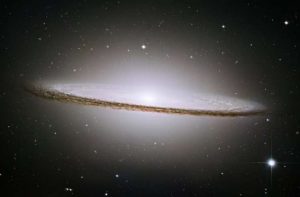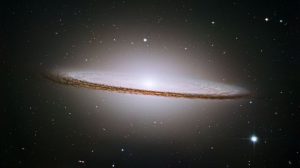galassia Sombrero
Onde Gravitazionali da Buchi Neri Supermassicci
Gli astronomi non dovranno aspettare molto a lungo per rilevare uno degli incontri più sensazionali del cosmo. Una nuova ricerca pubblicata su Nature Astronomy suggerisce che le onde gravitazionali generate dalla fusione di due buchi neri supermassicci potrebbero essere individuate entro 10 anni. Continua a leggere
La Maestosa Galassia Sombrero
Ecco una delle galassie più imponenti e fotogeniche dell’Universo: la galassia Sombrero, Messier 104 (M104). Segno distintivo della galassia è un nucleo bianco brillante a bulbo circondato da spesse strisce di polvere che percorrono la struttura a spirale. Osservata dalla Terra, la galassia è inclinata quasi di taglio ed è stata chiamata Sombrero per la sua somiglianza con l’ampio cappello messicano. Continua a leggere

